Here in Colorado, we face a variety of driving experiences throughout the year.
Scorching hot days where the pavement seems to melt before your eyes? Check.
Frigid temperatures with ice and snow packed roads that make it difficult to drive? Check, we have those too.
All of that can make it difficult to decide which car to buy. Should you focus on purchasing an all-wheel, front-wheel, or rear-wheel design? What’s the difference? Is one suited better for Colorado driving?
What is front-wheel drive?
When it comes to selecting a family car to get you around the city, front-wheel drive vehicles remain a popular choice. One recent study showed that just over 40 percent of the vehicles on the road today have front-wheel drive. But what exactly does that mean?
With a front-wheel drivetrain, the power of the vehicle remains with the front two wheels. This setup gives the front wheels the responsibility of moving and steering the car where you desire it to go.
From a design perspective, this is a less complex model, therefore it is also the least expensive way of powering a car. Because the engine is already upfront, it’s easier to connect power to the front wheels via two shorter drive axles.
But cost and ease is only part of the reason front-wheel drive vehicles remain one of the most popular choices on the road. They are also one of the most fuel-efficient.
Back in 1975, the Corporate Average Fuel Economy (CAFE) program was enacted. It was designed to improve fuel economy during the time of the Arab Oil Embargo. It sought standards to curtail fuel consumption as well as create jobs and cut global warming. As a part of that, automakers discovered that front-wheel drive vehicles was the quickest were to gain a few miles per gallon.
Having a more compact drivetrain, where the parts sit in front of the vehicle, reduces the weight. Less weight to move around on the road means a more fuel-efficient vehicle. It also works well here in Colorado because having the motor over the drivetrain also improves acceleration and traction. Whether roads are filled with water, ice, snow, sand, or gravel, a front-wheel drive vehicle will be easier to keep under control.
What is rear-wheel drive?
 Everything we discussed above that comes equipped with a front-wheel drive car is reversed with a rear-wheel model.
Everything we discussed above that comes equipped with a front-wheel drive car is reversed with a rear-wheel model.
You’ll find a variety of vehicles equipped with rear-wheel drive. Rear-wheel drive is a transmission system designed for a more even weight distribution and optimal handling in normal driving conditions. When the sun is shining and you’re ready to take your car for a drive, you’ll enjoy the performance of a rear wheel drive system. Punch the accelerator from a standing start, the weight transfers to the rear, and gives you a smoother transition as you pick up speed. No fishtailing.
However, that performance doesn’t convert well when ice and snow build up. With more power in the rear wheels, it increases the possibility of fishtailing and losing control as your back wheels try to maneuver.
What is all-wheel drive?
All-wheel drive is a type of four-wheel drive system. It automatically shifts power between the front and rear wheels, depending on the kind of driving conditions. It’s designed for lighter winter driving and off-pavement use. If you truly want to go four-wheeling, you’re better off selecting a four-wheel drive vehicle. But for most driving conditions here across the front-range, all-wheel drive is a good choice.
The concept of all-wheel drive has changed considerably since its inception. The split between all-wheel drive and four-wheel drive used to be more pronounced. To switch between the two, you would have to shift between them, selecting your driving preference. Thanks to technology, the difference is more automatic, with different types of vehicles moving seamlessly between the two, depending on the driving conditions. Vehicles like “crossovers” and others offer a wide variety of performance features. It’s easier to focus on the make and model, determining which is a good fit for your driving needs.
The role of the tires
While a vehicle’s drivetrain is important to how well your vehicle will perform in different situations, there’s another piece to the puzzle that can help make your car safer. The tires on your car are equally important to overall performance.
If you purchase a sporty vehicle, one that is designed for performance on dry roads, they are usually sold with summer tires designed with traction that can hug the open road. Dry conditions give you ease of handling, and can be quite fun to drive. However, the moment you add ice and snow to the mix, those tires won’t seem so impressive.
By adding snow tires to a front-wheel drive vehicle, you may see better performance than an all-wheel drive with summer tires. Again, the two pieces work in conjunction with each other to help you stay in control while you’re driving on the road.
Here in Colorado, we have both types of road conditions. And while all season tires can work well all year long, if you travel significant distances all year long and want the best performance possible in all conditions, combining snow tires with all-wheel drive is the way to go.
Problems with the drivetrain
No matter which type of vehicle you own, at some point in time, you may notice problems with the drivetrain.
- Vibrations or intense shaking from under the vehicle
- Difficulty making turns
- A loud clunking noise when shifting occurs as you drive
- A shuddering when stopping or starting
- A squeaking noise at low speeds
- A knocking noise as you drive
Any sound out of the ordinary is a reason for concern. If you notice something changes with the way your car drives, pay attention to where it’s coming from. This can help one of our mechanics pinpoint the problem.
Whether you have a front-wheel, rear-wheel, or all-wheel drive vehicle, the most important aspect of keeping them running well is to get them serviced regularly.

 The brake pad is attached to the caliper, which presses up against the brake rotor to cause friction, ultimately slowing and stopping your vehicle.
The brake pad is attached to the caliper, which presses up against the brake rotor to cause friction, ultimately slowing and stopping your vehicle.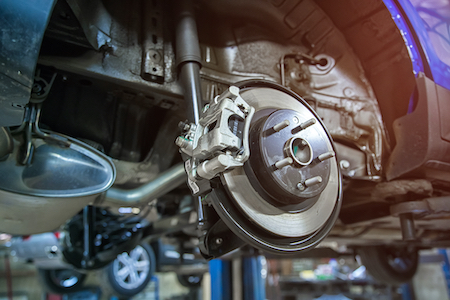 Disc thickness variation, or DTV, can be caused by different factors. It’s a mechanical term used to describe when the rotors have different thickness levels, and have worn unevenly over time. It can be caused by sticking calipers, rust, dirt and debris clinging to various parts of the pad and the rotor, or from slamming on the brakes frequently. When this thickness level is different, the brake pads will have to press against the rotor at varying degrees of friction. The rotors will have flat spots, meaning the brake pads will connect at different ratios. This will eventually cause one to wear down faster than the other.
Disc thickness variation, or DTV, can be caused by different factors. It’s a mechanical term used to describe when the rotors have different thickness levels, and have worn unevenly over time. It can be caused by sticking calipers, rust, dirt and debris clinging to various parts of the pad and the rotor, or from slamming on the brakes frequently. When this thickness level is different, the brake pads will have to press against the rotor at varying degrees of friction. The rotors will have flat spots, meaning the brake pads will connect at different ratios. This will eventually cause one to wear down faster than the other. Suspension systems should continue to operate effectively for many years and tens of thousands of miles/kilometers, holding your tires’ footprint on the road. Eventually components do wear out, but how long that takes depends a lot on how and where you drive.
Suspension systems should continue to operate effectively for many years and tens of thousands of miles/kilometers, holding your tires’ footprint on the road. Eventually components do wear out, but how long that takes depends a lot on how and where you drive. Brakes – Especially here in Colorado, cold weather can take its toll on the braking system. It can accelerate rusting on your brakes, especially if you’re on a busier street that routinely is prepped for ice and snow. Exposure to moisture and things like salt and mag-chloride can make its way to the brake rotors, causing corrosion, or wearing out the brake pads sooner.
Brakes – Especially here in Colorado, cold weather can take its toll on the braking system. It can accelerate rusting on your brakes, especially if you’re on a busier street that routinely is prepped for ice and snow. Exposure to moisture and things like salt and mag-chloride can make its way to the brake rotors, causing corrosion, or wearing out the brake pads sooner.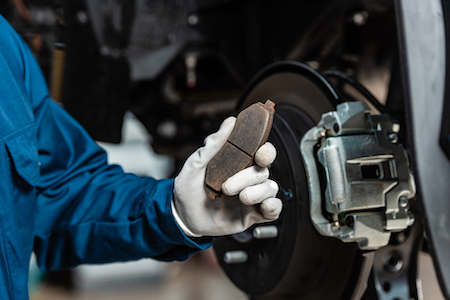 That’s not the only circumstance that can cause a sudden noise. Here in Denver, many of us head to the hills for a day of skiing. As you’re flying down the mountain on your drive home, your brakes may start to squeak. It could be from excessive heat. Are you riding the brakes as you come down in elevation? If the brake pads continually press up against the rotors, excessive heat builds. Eventually, the friction can start creating a noise. It may also lead to a temporary reduction in braking power, known as brake fade. If you notice this happening, pull over to a safe spot for five to ten minutes and give your brakes a chance to cool down. Learn to downshift as you descend in elevation, that can take the pressure off of your brakes.
That’s not the only circumstance that can cause a sudden noise. Here in Denver, many of us head to the hills for a day of skiing. As you’re flying down the mountain on your drive home, your brakes may start to squeak. It could be from excessive heat. Are you riding the brakes as you come down in elevation? If the brake pads continually press up against the rotors, excessive heat builds. Eventually, the friction can start creating a noise. It may also lead to a temporary reduction in braking power, known as brake fade. If you notice this happening, pull over to a safe spot for five to ten minutes and give your brakes a chance to cool down. Learn to downshift as you descend in elevation, that can take the pressure off of your brakes.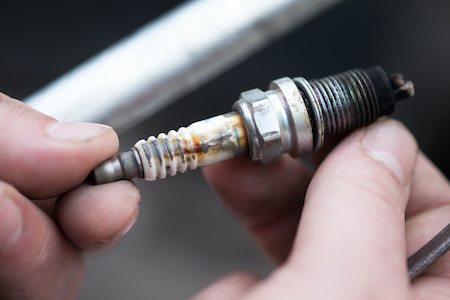 If you’ve started noticing your car misfires when you turn it on, it’s just one of the signals your vehicle gives you to let you know your spark plugs are wearing out. When it comes time to replace them, there are several different variations of spark plugs available.
If you’ve started noticing your car misfires when you turn it on, it’s just one of the signals your vehicle gives you to let you know your spark plugs are wearing out. When it comes time to replace them, there are several different variations of spark plugs available. Every single vehicle manufacturer spends a lot of time getting to know the vehicle they are producing. They pick parts for a reason. They put systems together with a goal in mind.
Every single vehicle manufacturer spends a lot of time getting to know the vehicle they are producing. They pick parts for a reason. They put systems together with a goal in mind.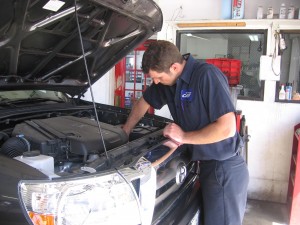 Modern vehicles usually have four wheels, a steering wheel, and an engine, just as they have for decades. But an awful lot has changed since the days of carburetors and drum brakes. The addition of computers to so many automotive systems has been a game changer, enabling safer braking systems, stability control, and better fuel economy, to name a few.
Modern vehicles usually have four wheels, a steering wheel, and an engine, just as they have for decades. But an awful lot has changed since the days of carburetors and drum brakes. The addition of computers to so many automotive systems has been a game changer, enabling safer braking systems, stability control, and better fuel economy, to name a few.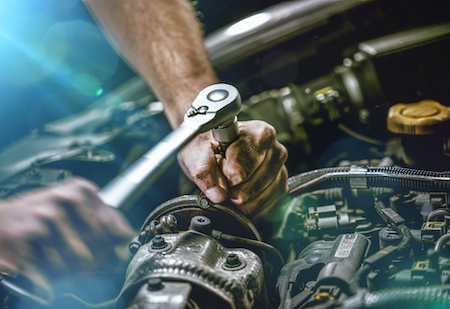 You can check online reviews, and look at what people have to say about a shop. Very quickly you’ll start to discover a pattern forms, and you can tell how well they’re standing up in the community.
You can check online reviews, and look at what people have to say about a shop. Very quickly you’ll start to discover a pattern forms, and you can tell how well they’re standing up in the community.